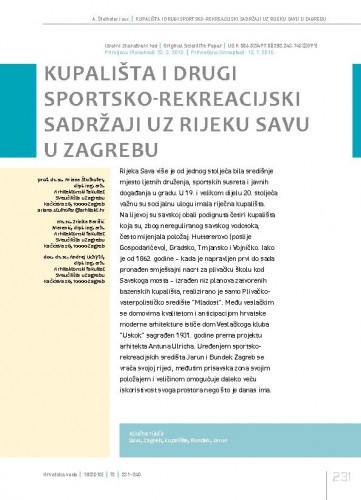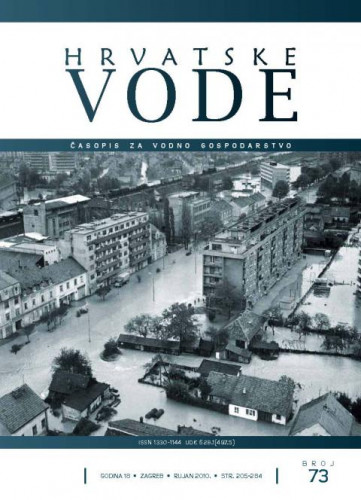Rijeka Sava više je od jednog stoljeća bila središnje mjesto ljetnih druženja, sportskih susreta i javnih događanja u gradu. U 19. i velikom dijelu 20. stoljeća važnu su socijalnu ulogu imala riječna kupališta. Na lijevoj su savskoj obali podignuta četiri kupališta koja su, zbog nereguliranog savskog vodotoka, često mijenjala položaj: Huttererovo (poslije Gospodarićevo), Gradsko, Trnjansko i vojničko. Iako je od 1862. godine - kada je napravljen prvi do sada pronađen smještajni nacrt za plivačku školu kod Savskoga mosta - izrađen niz planova zatvorenih bazenskih kupališta, realizirano je samo Plivačko-vaterpolističko središte "Mladost". Među veslačkim se domovima kvalitetom i anticipacijom hrvatske moderne arhitekture ističe dom Veslačkoga kluba "Uskok"sagrađen 1931. godine prema projektu arhitekta Antuna Ulricha. Uređenjem sportsko-rekreacijskih središta Jarun i Bundek Zagreb se vraća svojoj rijeci, međutim prisavska zona svojim položajem i veličinom omogućuje daleko veću iskoristivost svoga prostora nego što je danas ima..; More than a century, the Sava River has been the central place for summer gatherings and sporting and public events in the city. In the 19th and a large part of the 20th century, the river beaches had an important role. On the Sava's left bank, four beaches were built, which often changed locations due to the unregulated course of the Sava – Huttererovo (later Gospodarićevo), Gradsko, Trnjansko and army beaches. Since 1862, when the first location plan to date has been found of the swimming school at the Sava Bridge, a number of plans for closed swimming pools were developed, although only the Swimming and Water Polo Centre “Mladost“ has been built. Among rowing facilities, the most remarkable for its quality and anticipation of Croatian modern architecture is the home of the rowing club "Uskok", designed by the architect Antun Ulrich and built in 1931. Since the development of the sporting and recreational centres Jarun and Bundek, Zagreb has been returning to its river; however, based in its location and size, the zone along the Sava River offers a much greater utilization of the area than is the case today.
Sažetak
Dio sveska

